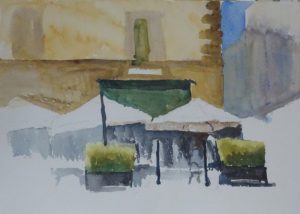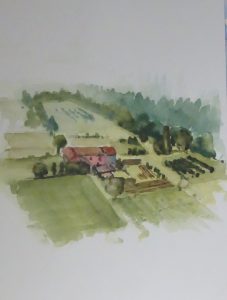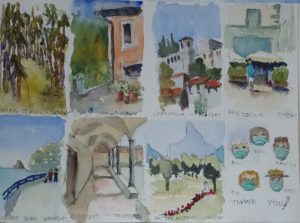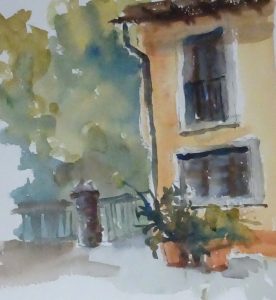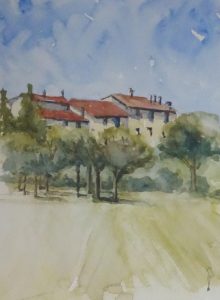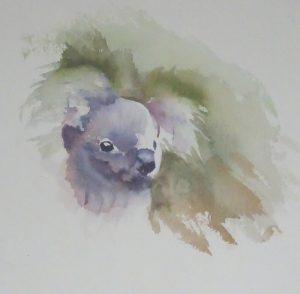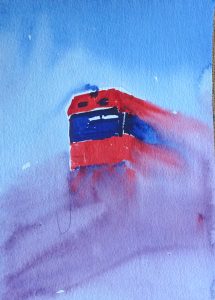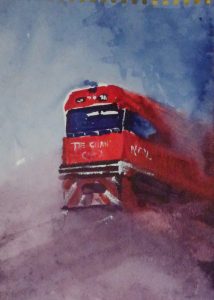The nearest town, walled, of course, is Fivizzano, and we spent the day there. There was a fairly busy, fully masked, market in the town square where I did my least successful painting, in fact I didn’t even finish it, not because I was dissatisfied but because I ran out of time! The photo enhances the painting, and I will finish it from the photo I took, though that is not ideal.
I discovered I can’t paint happily with my pad on my knees. I need a wall or an easel as support. My quick sketch was more lively. The sketch was done in situ in pen, and the paint added later.
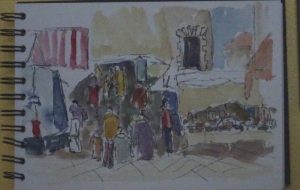 After lunch we migrated to the city walls, and attempted the valley below. Here I had a wall to rest on so was able to work more comfortably. It was a difficult view for me with my very young drawing skills, looking down on all those lines and angles, though right up our tutor’s street! I still found mixing colour problematic, forgetting all my knowledge about aerial perspective, never mind wrestling with the terrestrial kind. Gradually I dredged up my old skills. Painting out of doors is not just a matter of turning up and painting the view. Even the things I do almost instinctively when in the studio have to be adjusted to changing light and unhelpful colourings. But some kind of satisfaction was achieved.
After lunch we migrated to the city walls, and attempted the valley below. Here I had a wall to rest on so was able to work more comfortably. It was a difficult view for me with my very young drawing skills, looking down on all those lines and angles, though right up our tutor’s street! I still found mixing colour problematic, forgetting all my knowledge about aerial perspective, never mind wrestling with the terrestrial kind. Gradually I dredged up my old skills. Painting out of doors is not just a matter of turning up and painting the view. Even the things I do almost instinctively when in the studio have to be adjusted to changing light and unhelpful colourings. But some kind of satisfaction was achieved.

